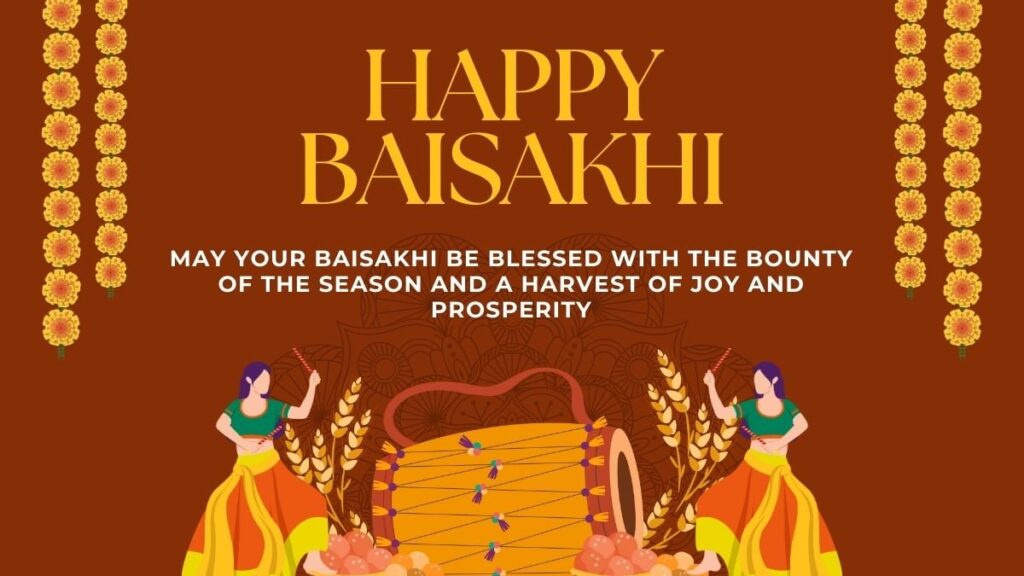
Happy Baisakhi
Baisakhi, also known as Visakhi, stands as a significant cultural and agricultural festival, predominantly celebrated in the vibrant state of Punjab and various other parts of northern India. It holds profound importance in both Sikh and Hindu traditions, marking the commencement of the new year in the Sikh calendar and heralding the first day of the Hindu month of Vaisakh. Typically falling on April 13 or 14 according to the Gregorian calendar, this year, Baisakhi graces us on April 14, a Saturday, drawing communities together in a jubilant celebration of abundance and gratitude.
Table Of Contents
Historical and Cultural Significance Of Baisakhi
The roots of Baisakhi trace back centuries, laden with historical and cultural significance. For Sikhs, Baisakhi holds deep resonance as it marks the day of the formation of the Khalsa Panth by Guru Gobind Singh in 1699. This act symbolized the birth of a martial community dedicated to upholding righteousness and justice. Hence, Baisakhi stands as a day of spiritual renewal and commitment for Sikhs worldwide.
In addition to its Sikh significance, Baisakhi also holds importance in Hindu mythology, signifying the beginning of the harvest season and the onset of prosperity. The festival embodies the spirit of renewal, with farmers rejoicing as they reap the bounties of their labor, marking the culmination of the Rabi crop harvest. It symbolizes the harmonious relationship between humanity and nature, where gratitude is expressed for the abundance bestowed upon the land.

The Festive Spirit
Baisakhi embodies an aura of jubilation and camaraderie, with communities coming together to partake in various festivities. Vibrant processions, pulsating music, and traditional dances such as the energetic Bhangra and graceful Giddha adorn the streets, infusing the atmosphere with exuberance and joy. Temples and gurdwaras resonate with prayers and hymns, reverberating the spirit of unity and devotion.
The festival is also a culinary delight, with households preparing sumptuous feasts comprising traditional delicacies such as Makki di Roti (corn bread) and Sarson da Saag (mustard greens), exuding flavors emblematic of Punjab’s rich culinary heritage. Sweet treats like jalebi and ladoo add a delectable touch to the festivities, indulging the palate and symbolizing sweetness and abundance in life.
Expressions of Gratitude
At its core, Baisakhi is a festival of gratitude, where individuals express thankfulness for the blessings bestowed upon them. Farmers offer prayers in gratitude for a bountiful harvest, acknowledging the benevolence of nature and the divine. Devotees throng to gurdwaras and temples, offering prayers and seeking blessings for prosperity and happiness in the coming year. Acts of charity and goodwill are also prevalent, as communities extend a helping hand to the less fortunate, embodying the spirit of compassion and sharing.
Contemporary Relevance
In contemporary times, Baisakhi transcends cultural and religious boundaries, serving as a symbol of unity and diversity. It serves as a platform for fostering communal harmony and understanding, where people from all walks of life come together to celebrate shared values of love, compassion, and gratitude. The festival serves as a reminder of the inherent interconnectedness between humanity and the environment, emphasizing the need for sustainable practices to preserve the earth’s resources for future generations.
Conclusion
Baisakhi stands as a testament to India’s rich tapestry of culture and tradition, weaving together threads of history, spirituality, and festivity. It serves as a reminder of the timeless values of gratitude, unity, and compassion, which resonate across generations and borders. As we come together to celebrate Baisakhi in 2024, let us embrace the spirit of joy, prosperity, and harmony, fostering a world where abundance is shared, and every heart beats to the rhythm of gratitude.






